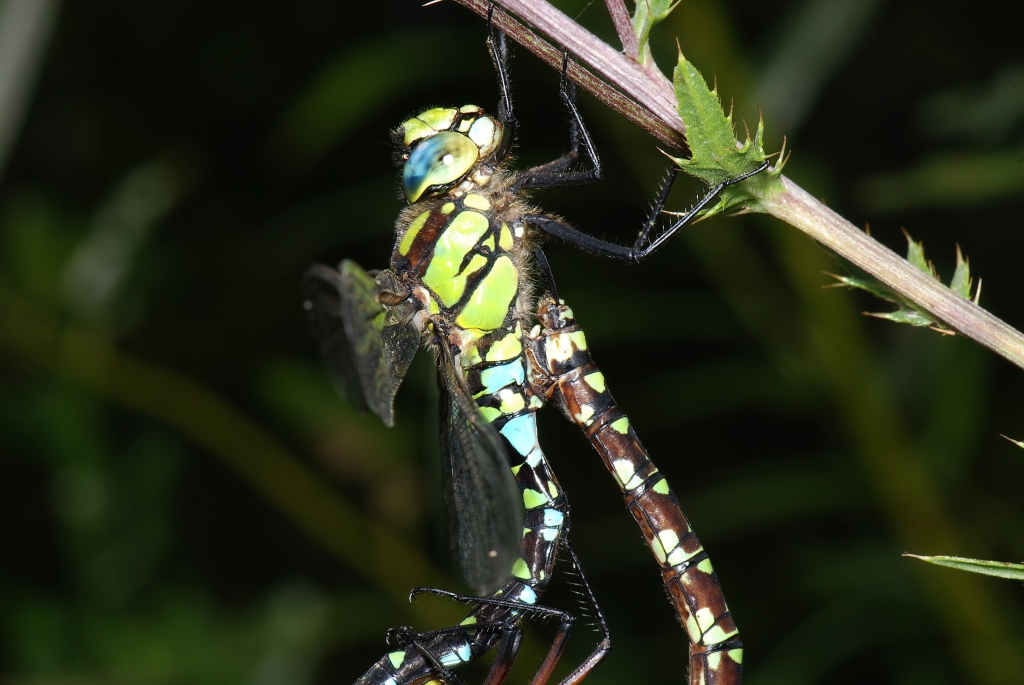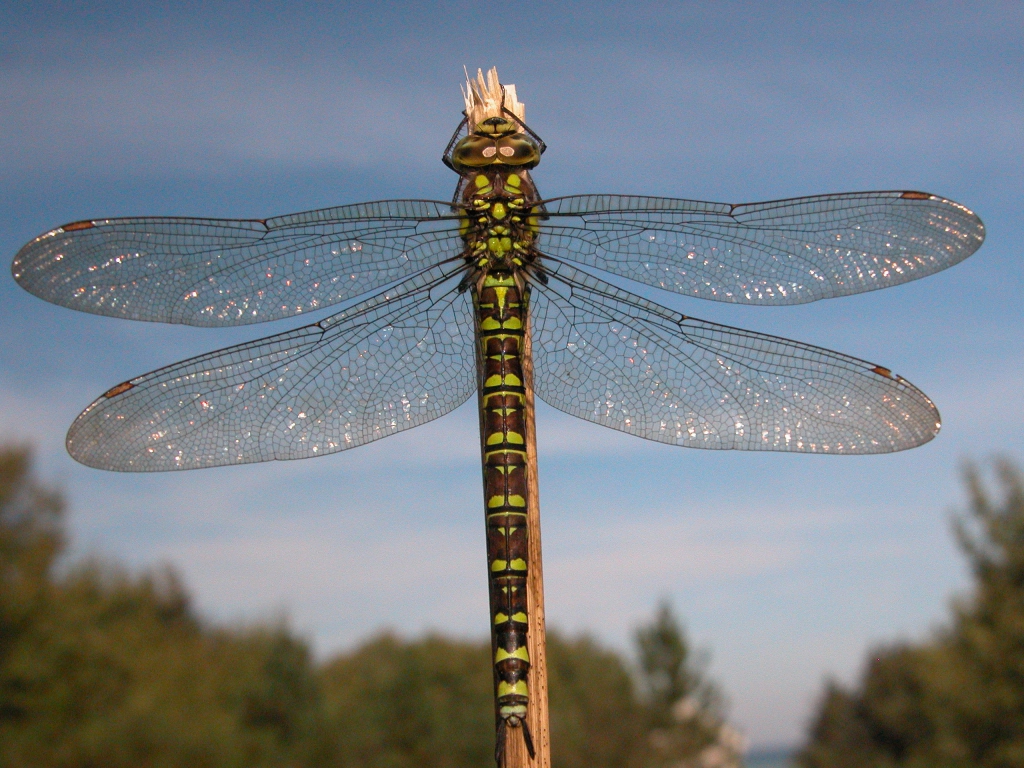Goldsmith
– a living prehistoric find
Ancient and still on its wings
The dragonfly is one of the oldest insects. Fossils have been found of 250-million-year-old dragonflies that look like today’s like species. The means that dragonflies were flying around the conifer and bracken forests even before the first dinosaurs appeared on earth. Also in Denmark, in the mo-clay from Mors and Fur, dragonfly fossils have been found that are 54-million-years-old. The largest insect to ever live on earth was the giant dragonfly, which had a wingspan of 70 cm.
Flying helicopter
The dragonfly’s flying technique is unique in the animal world. Not only is it extremely fast, flying at a speed of 35-40 km/h, but the dragonfly can move its front and rear wings independently to give it greater manoeuvrability in the air. Just like a helicopter, it can hover in the air for several minutes and can quickly change direction as well as fly backwards.

Eat or be eaten
The dragonfly has huge compound facet eyes, which can consist of nearly 30,000 facets in each eye. The big eyes make it able to see at a distance of 15-20 m in all directions. Helped by its sight, it can capture other flying insects in the air. It holds onto its prey with its legs and can also eat while it is on its wings.
The dragonfly larvae live in freshwater in ponds, small lakes and watercourses. The larva is a deadly predator that lies in wait for anything that moves. It eats aquatic insects, tadpoles and fish fry. It is said that if the dragonfly larva was the size of a dog, it would be the world’s most dangerous predator. Neither larvae nor adult dragonflies go out of their way to eat other dragonflies. The dragonfly has plenty of other enemies to deal with. Its eggs and larvae can be eaten by fish and aquatic insects, ducks and herons and especially newly metamorphasised dragonflies are vulnerable. They fly poorly and can be easily caught by birds like kingfishers and small falcons. If they are really unlucky, they might even fall on the carnivorous sundew plant and be eaten by a flower.
Facts
There are 35 species of dragonflies in Denmark. Dragonflies can be distinguished from the closely related damselflies by the fact that they keep their wings perpendicular out from the body in rest, whereas damselflies hold their wings folded alongside the body. The Blue Hawker is widespread and commonly found throughout most of the country. It is one of our largest species with a body length of 71-74 mm and a wingspan of 97 to 110 mm. The male is eye-catching with beautiful yellow, green and blue spots on its abdomen. The female only has green spots. It breeds in small lakes and ponds and hunts over meadows and along forest roads and also in gardens. It flies during the period from late June to October.


